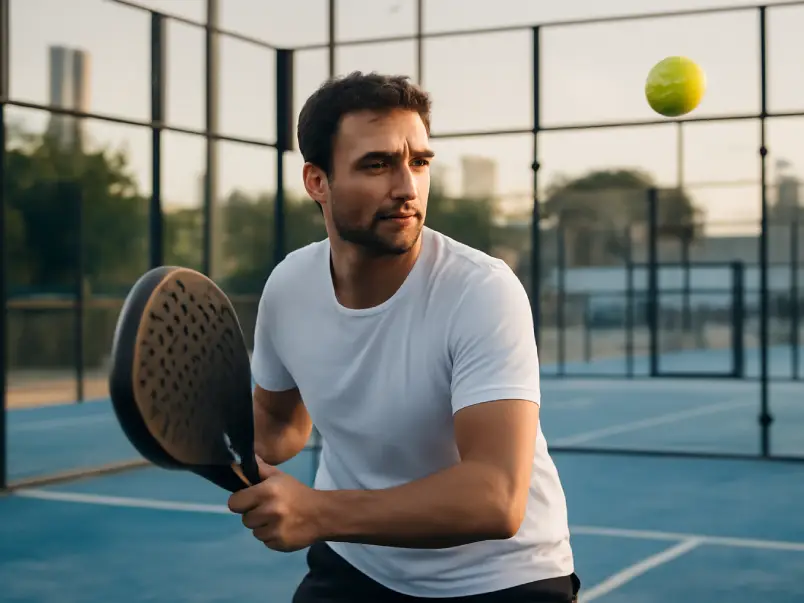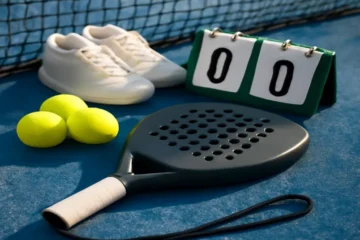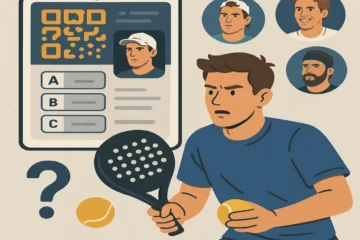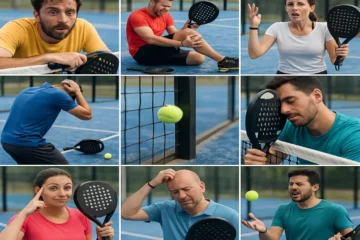Padel is everywhere. You’ve seen the glass walls, the energetic rallies, and the unique blend of tennis and squash. It’s taking the world by storm, capturing the attention of both recreational players and professional athletes. The sport is booming, with celebrities hopping on the bandwagon, discussions of Olympic inclusion, and padel clubs sprouting up worldwide. But behind this fast-growing trend is a fascinating story—a story filled with chance, vision, and unexpected twists. This is the history of padel, one of the world’s most surprising and beloved sports.
More Than Just a Trend
You may have noticed the sudden surge in popularity of padel in recent years. It’s not just a passing fad. Padel has cemented its place as one of the fastest-growing sports in the world, and its rise shows no sign of slowing down. From Europe to Latin America and even the United States, more people are discovering the excitement of hitting the court. Whether it’s the appeal of playing a sport that combines the finesse of tennis with the fast-paced action of squash, or the social nature of the game that encourages camaraderie, padel is here to stay.
The story of padel’s success, however, is as surprising as the sport itself. Its history is filled with lucky accidents, chance encounters, and a few bold decisions by key individuals. From its accidental creation in Mexico to its explosive growth in Spain and Argentina, the story of padel is as thrilling as the game itself.
In this article, we’ll dive into the origins of padel, the key figures that helped shape the sport, and some fun trivia that will make you the go-to expert among your friends. Let’s take a journey through time and discover how this unique sport came to be, and why it’s capturing hearts around the globe.
The Accidental Birth: A Story of Enclosure
The year is 1969, and we’re in Acapulco, Mexico. Picture this: a wealthy businessman, Enrique Corcuera, is enjoying his vacation at his seaside estate. Corcuera, an entrepreneur with a love for sports, had plans to build a tennis court on his property. But there was a problem—the space was limited, and local vegetation kept creeping into the area, disrupting the game. The walls of the court would need to be high enough to contain both the balls and the encroaching plants. But what if the walls didn’t just keep the plants out but became an essential part of the game?
This was the accidental birth of padel.
Corcuera decided to take a bold step: he enclosed his court with walls that were around 3-4 meters high. This solution solved the problem of the overgrown vegetation, but it also created a new dynamic. The enclosed space changed how the game was played, allowing the ball to bounce off the walls, similar to the game of squash. This was a significant deviation from traditional tennis and laid the foundation for what would become padel.
But Corcuera’s innovation didn’t stop there. He adapted the rules from both platform tennis and tennis, creating a hybrid game with a unique set of rules. He called it “Paddle Corcuera.” The game was played with solid, stringless paddles (hence the name “padel”), and the court was smaller than a traditional tennis court, making for fast-paced and intense rallies. Corcuera had unintentionally created a brand new sport, a game that would eventually spread across the globe.
The Spanish Connection: How a Prince Popularized the Sport
Enrique Corcuera’s accidental invention might have remained a niche sport if not for a chance encounter with Alfonso de Hohenlohe, a Spanish aristocrat and close friend of Corcuera. In 1974, Prince Alfonso visited Corcuera’s estate in Acapulco and was immediately captivated by the game. Hohenlohe, a man of taste and influence, saw the potential in this new sport and decided to take it back to Spain. He introduced padel to his elite circle in Marbella, and from there, the game began to take off in Spain.
Hohenlohe built two courts at his Marbella Club Hotel, and it didn’t take long before the jet-set crowd took an interest. The combination of a unique and fun sport with a glamorous location like Marbella made padel a hit among Spain’s elite, including royalty, business tycoons, and celebrities. Soon, padel courts began popping up across the Costa del Sol, and the sport spread rapidly throughout Spain. It wasn’t long before Spain became the world capital of padel, setting the stage for its dominance in the sport.
The Argentinean Explosion: A Second Home
While padel was gaining traction in Spain, it was also making waves in Argentina, thanks to another of Alfonso de Hohenlohe’s friends—Argentine millionaire Julio Menditeguy. Menditeguy was so taken with the sport that he introduced it to his home country. Argentina, known for its passionate love of sports like football and rugby, quickly embraced padel. The game’s social, fast-paced nature, combined with the accessibility of its equipment and courts, made it an instant hit.
By the 1980s, padel was not just a sport for the elite—it had become a cultural phenomenon in Argentina. The sport quickly spread across the country, and Argentina became a powerhouse in the world of padel, with its players rivaling Spain’s in both skill and popularity. Argentina would go on to produce some of the world’s top padel stars, and its contribution to the sport’s growth was immeasurable. As the 21st century rolled in, padel in Argentina was more than just a pastime; it was a way of life.
Padel Trivia: Fun Facts to Impress Your Friends
Now that you know the origins of padel, let’s dive into some fun trivia that will make you sound like a pro the next time you’re chatting about the sport.
The Name: Where Did “Padel” Come From?
The name “padel” is derived from the English word “paddle,” which refers to the solid, stringless rackets used in the game. The name is simple but perfectly captures the essence of the sport—a game played with paddles.
The Court: Small But Mighty
A padel court measures 20 meters by 10 meters (about 66 feet by 33 feet), making it significantly smaller than a traditional tennis court. The glass walls that surround the court play a crucial role in the game, as players can hit the ball off the walls, adding a unique strategic element to the game.
The Ball: Similar, But Not Quite
The padel ball looks similar to a tennis ball, but it’s slightly less pressurized. This lower pressure makes the ball travel slower, allowing for longer rallies and giving players more time to react and strategize.
The Serve: A Unique Twist
One of the defining rules of padel is the serve. Unlike tennis, where serves are typically powerful and overhand, in padel, the serve must be done underhand. This unique rule eliminates the power-serving advantage that is prevalent in tennis, making the game more about skill, strategy, and teamwork.
Scoring System: Easy to Understand
The scoring system in padel is identical to tennis, with points counted as 15, 30, 40, and game. This familiar system makes it easy for newcomers to pick up the game and start playing without the need to learn a completely new set of rules.
The Modern Era: From Niche to Global Phenomenon
By the 1990s, padel had gone beyond its roots in Spain and Argentina. The formation of the International Padel Federation (FIP) in 1991 marked a significant milestone in the sport’s development. The FIP worked to establish a standardized set of rules, promote the sport internationally, and organize global tournaments. This helped padel gain traction in other European countries like Italy, France, and Sweden.
In the 21st century, padel entered its explosive growth phase. The rise of professional padel tournaments, most notably the World Padel Tour (WPT), brought the sport to a global audience. With more tournaments, sponsorship deals, and broadcast agreements, padel became a mainstream sport, attracting players and fans from all corners of the world.
The Olympic Dream
Perhaps the most exciting development in recent years has been the push to include padel in the Olympic Games. The International Padel Federation is working hard to secure Olympic status for the sport, and with its growing popularity, it’s only a matter of time before padel graces the Olympic stage. If that happens, we could see a whole new level of global interest and competition in the sport.
Conclusion: A History Still Being Written
From its humble beginnings in a small backyard in Acapulco to becoming a global sensation, the history of padel is a testament to the power of innovation, passion, and chance encounters. What started as a creative solution to a problem has evolved into one of the fastest-growing sports in the world, beloved by millions.
Padel’s success lies in its unique, social, and accessible nature. It’s a sport that anyone can pick up and enjoy, regardless of age or skill level. The future of padel is bright, and the next chapter of its story is still being written on courts around the world. Whether you’re a seasoned player or someone looking to try the sport for the first time, you’re now a part of a thrilling, ever-evolving history.
FAQs
What is padel?
Padel is a racquet sport that combines elements of tennis and squash. It is played on a smaller, enclosed court with glass walls, and players use solid rackets (padels) without strings. The game is fast-paced, social, and highly accessible for players of all skill levels.
What are the rules of padel?
Padel uses the same basic scoring system as tennis (15, 30, 40, game) but features an underhand serve, smaller courts, and the ability to play the ball off the walls. Players use solid, stringless paddles, and the game emphasizes strategy and teamwork.
Can beginners play padel?
Absolutely! Padel is known for its accessibility and ease of learning. With fewer technical requirements than tennis, it’s perfect for beginners. The smaller court and slower pace allow players to enjoy the game while improving their skills.
Can padel become an Olympic sport?
Padel is currently seeking inclusion in the Olympic Games. The International Padel Federation (FIP) is working toward this goal, and with the sport’s growing global popularity, Olympic recognition could be in the near future.
What type of racket is used in padel?
Padel players use a solid racket with no strings, typically made from materials like carbon fiber or fiberglass. These rackets are smaller and lighter than tennis rackets, which allows for greater control and quicker reactions on the smaller court.
Where can I play padel?
Padel can be played at specialized padel clubs, which are increasingly popular in Europe, Argentina, and many other parts of the world. Many cities now offer padel courts for public use, and new facilities are being built every year to meet the growing demand.




